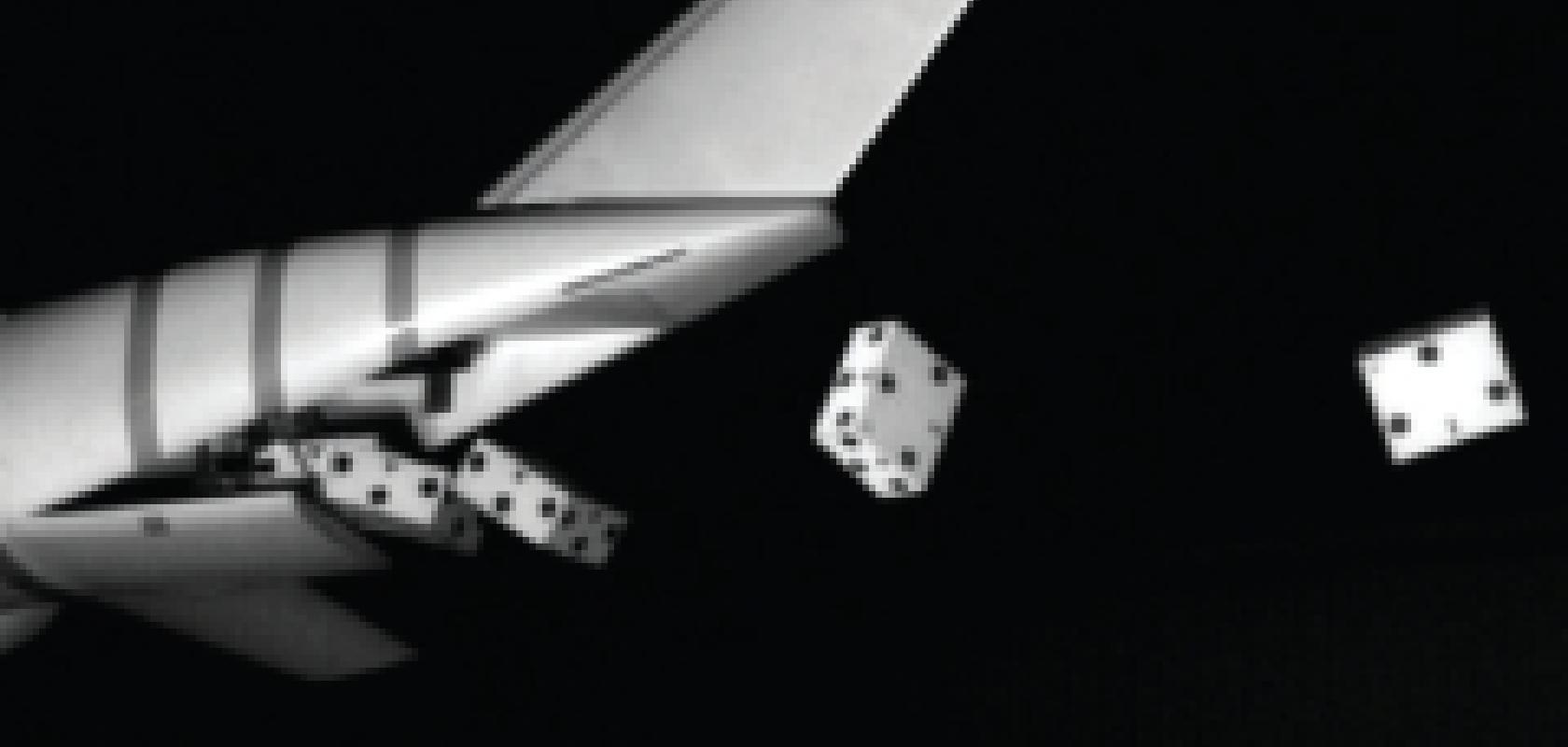This year, the UK Ministry of Defence spent roughly £33bn, with a large proportion of this money going towards new equipment. With such large sums of money at stake, it should be no surprise that a sizeable chunk (£2.6bn) is spent on research and development to find new technologies that are more effective than previous efforts.
Imaging and machine vision has long been used by the military, for both surveillance and weapons testing, and as such the technology has significantly benefited from this investment. The development of thermal imaging in particular came from military applications, but high-speed visible imaging and 3D vision are also improving and may soon enter the industrial market thanks to money spent by defence organisations. Thermal imaging has long been used for covert surveillance operations, often in the dead of night. The cameras can now take snapshots of an image, practically instantaneously, and they are used for all kinds of applications, from airport security to industrial inspection, but this wouldn’t be possible without technology developed by the military.
Up until the late 1990s, a single detector would scan across the image capture area from top to bottom, collecting the data necessary to form an image that represented the differences in temperature within a scene. However, the scene could change in the time taken to capture an image, meaning it was virtually useless for tracking moving targets like missiles or tanks.
Now, at least in part due to military funding, thermal imagers include 2D arrays of pixels that capture thermal representations within an instant. The resolution has improved enormously within this period, now reaching 640 x 512 pixels – a clarity associated with normal, visible cameras. The sensitivity has also increased to a precision of 0.02°C, meaning they can now detect objects at distances of 10km or more.
‘Military applications of thermal imaging came first and stretched the cameras to improve the sensitivity,’ says George Bailey, a vision consultant of GB Enterprises in the UK, which distributes Polytech’s thermal equipment.
These improvements give military personnel more information when surveying terrain, and will allow them to distinguish targets more easily. It can even see through camouflage and clothes that reduce a body’s heat loss.
Looking to the future, the military is currently developing two new technologies that could one day spread to industrial applications. Traditional thermal imaging equipment needs to be cooled to sub-zero temperatures, which obviously reduces the mobility of the systems: ‘Carrying a fridge is not a convenient solution,’ says Bailey.
Instead, researchers are now developing uncooled thermal cameras that would not require this heavy, power-consuming equipment. These are not as sensitive to temperature differences as the cooled imagers, so they are only suitable for short-range applications, and Bailey remains dubious as to whether the current technique for uncooled thermal imaging will last.
‘We’ll need a different technology, but with the same principle, using MEMS or nanotechnology,’ he says. ‘It’s still in the hands of the blue sky thinkers.’
In addition to expanding the resolution and sensitivity of these devices, military researchers are also trying to expand the wavelengths they can cover, from infrared wavelengths to the near-infrared range close to the visible spectrum.
Bailey says this could be five or 10 years away from successful applications in the military, but if it works, it could provide 3D information about the shapes of objects, in a similar technique to radar, while still being more covert than traditional visible imaging. However, it does have an obvious disadvantage: everything gives out IR radiation, used in thermal imaging, whereas NIR imaging would need its own illumination, possibly from a laser source. 
The Trajectory Tracker from Specialised Imaging tracks the path of projectiles such as missiles
Within the military, vision also has a role in the testing and development of other military equipment, although it seems the trends are still largely the same in this area. ‘The trend is for more pictures at better resolutions, because it gives more information,’ says Wai Chan, managing director of Specialised Imaging.
One of its more successful products is the Trajectory Tracker system, which tracks the progress of fired projectiles. The device contains a computer-controlled mirror that moves in sync with the missile, scanning its flight-path. Because the mirror is moving in time with the missile, it provides a totally blurless image, which is then captured using a high-speed camera.
Currently, the device can only view the missile in two dimensions, but many problems with its trajectory could occur in three dimensions – like a wobble from left to right, for example. To solve this, the team are currently looking at creating a 3D video motion tracker, using two synchronised Trajectory Trackers at opposite sides of the flight. The system is currently being tested at the French/German Institute Saint Louis, and if all goes well it could be ready for use within the next couple of months.
It is easy to forget that, in many cases, the military is employed to save lives rather than end them, and a recent application of vision technology used the latest in high-speed computing to design safer methods of delivering humanitarian supplies.
The research, carried out at the Low-Speed Wind Tunnel in Braunschweig, used high-speed imaging equipment to test the trajectories of objects (such as boxes of food and medicine) thrown from an aircraft. Sometimes, the airflows around a plane can cause the boxes to tumble and move unpredictably, which could strike and damage the aircraft, so the team needed to study this phenomenon and to refine software that would be used to simulate airflow.
High-speed imaging helps scientists at the Low-Speed Wind Tunnel in Braunschweig to track the path of humanitarian suppliers thrown from aeroplanes
Two cameras provided a 3D stereo setup, which captured images of 13-megapixel resolution at a rate of 500fps. This produced a huge amount of data, which placed a strain on both the data transfer mechanism of the cameras, and the image processing, which included complex algorithms that tracked the different packages.
To solve this, the team reprogrammed the cameras’ software so that it could both capture images and transfer them to the computer at the same time, increasing the possible length of exposure and providing brighter images of the wind tunnel. Dalsa’s new Xcelera frame grabber also helped with this, by providing high-speed data output at a rate of 655 Megapixels per second.
To improve the speed of data analysis, software-provider Fibus developed its picColor software with a method of high-performance computing called parallel programming, that split the data into different packets and processed them in parallel, at the same time. According to Dr Reinert Mueller at Fibus, the software was so successful it could provide feedback in real time – a trait that has proved to be useful in other research currently conducted at the wind tunnels
Parallel computing is currently gaining popularity as a means to accelerate scientific research, and it’s interesting to note that its benefits could soon be transferred to military R&D, where, like many of the technologies discussed in this article, it could be changed and improved beyond almost all recognition.
In the past, the UK, and many other countries, have been criticised for spending more money on military research than medicine or other areas of science. But it seems, from these examples at least, that the new-found knowledge is rarely contained within one sector, and is frequently adopted in other industries for the benefit of everyone. All of which should leave those in the UK with free consciences that at least some of £2.6bn invested this year is money well spent.
Billions are spent on military equipment each year, and governments are frequently called upon to reduce these investments. Now, a new vision technology, integrated with ultrasound technology, could help governments to track down, and possibly share, their available resources.
The technique is currently being deployed in the US, which is now encouraging NATO to adopt the system. The policy is that every tool that costs more than $5,000, or that is mission critical, must be labelled with a code that uniquely labels the part. Then, each time it is deployed, its code is scanned and its whereabouts are stored on a central database, allowing the country to keep track of every important resource.
The code is stored as a data matrix, which has also proved to be popular in labelling automotive parts (see the Manufacturing feature of the June/July 2007 issue). These codes are formed from a matrix of dots, and contain more information than traditional barcodes. They can also be read quicker, and can be read in bad light and bad conditions.
In fact, according to Neil Andrew, the managing director of Pryor, which develops the data matrix readers, the codes can be protected underneath paint and coatings and then read using ultrasound – making them ideal for harsh environments. The system would allow more informed planning when NATO decides to deploy troops, as they could see more easily where the necessary resources were stored, and how easily they could be deployed. The data matrices could also provide information on the different parts needed for repair, making the maintenance of the equipment easier.


